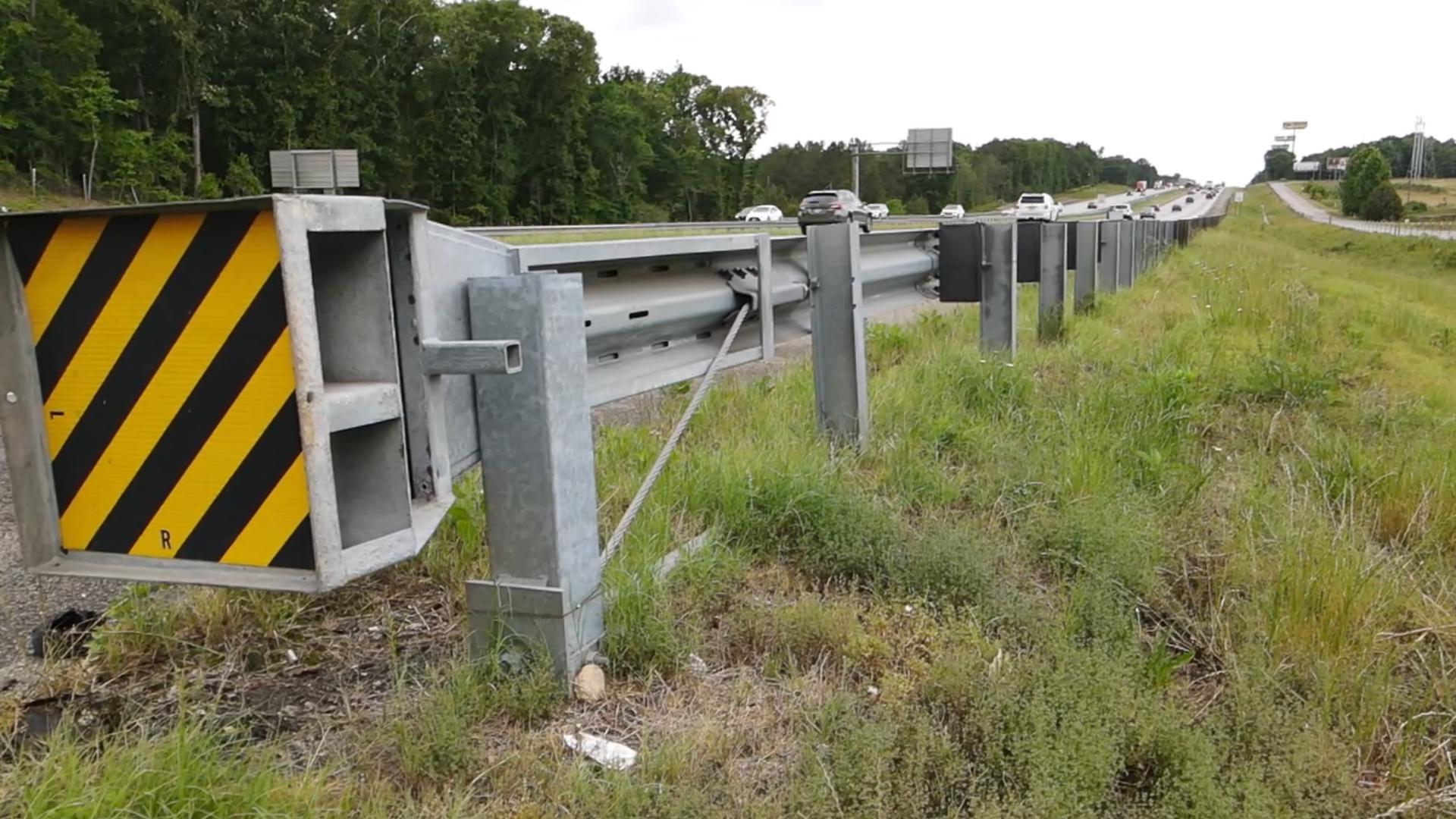CLAYTON COUNTY, Ga. — Georgia’s Department of Transportation says it has fixed more than 1,400 installation problems with guardrail end treatments on the state’s freeways and interstates in response to an 11Alive News investigation.
The statewide audit was announced in 2022, after 11Alive News Investigates uncovered dozens of guardrail sections installed with parts from different manufacturers, often dubbed ‘Frankensteined’ guardrails. There’s no way to know how they’ll respond in a crash, because they’re not built to the manufacturer’s specifications, and therefore not crash tested that way.
Cathy and Mark Alonzo lost their daughter in 2020 after she crashed into an improperly installed guardrail on I-75 in Peach County. Upon impact the guardrail pierced into the side of her vehicle.
“How are you just driving down the road and all of the sudden your car is impaled by a guardrail?” asked Isabella’s mother. “This shouldn't have happened to our daughter and I don't want it to happen to anyone else's child.”
Guardrail is tested with the assumption the vehicle hits the end terminal head on. So, its performance, even when properly installed, can vary by the angle and speed of the car. It’s why GDOT spokesperson Natalie Dale stresses, guardrail is not a cushion. It is there to slow the vehicle and prevent something worse from happening, like going off a cliff or into oncoming traffic.
But GDOT’s audit found more than 600 cases where a key element of that process was installed backwards. According to data received through an open records request, the problem existed across the state’s seven maintenance districts. But nearly 20% of the errors were in the southeast part of the state.
“If it's flipped,” explained Dale, “you don't have that that sort of curved space there for the guardrails to slide. And so this could impede that movement when struck, which would cause it to be more rigid, which would cause sort of a higher severity in the crash.”
As for the mix-matched parts, or franksteined guardrails, the west side of central Georgia contained 45% of the 563 errors found.
The audit has taken about two years to complete and cost more than $5 million, but Dale says it’s been money well spent. Not only has it caught and corrected errors that should make Georgia’s roads safer, but has helped GDOT create an quality control system that will ensure future repairs and installations are made correctly.
“The conversation with y'all started in part, as a really sort of opening our eyes to the issue of mismatched parts of installation issues on our roadway,” said Dale.
Dale says the installation errors represent only about 2% of the state’s guardrail system. But the audit served other purposes as well. GDOT now has an inventory of what’s on the state’s roads should issues arise in the future.
Two years ago, 11Alive asked questions about Georgia’s use of Xlite end terminals after a lawsuit alleged the model pierced through a woman’s car in Tennessee killing her. Eighteen states eventually removed them for safety concerns.
Last year, Georgia confirmed 300 Xlites were sold to contractors in our state, but couldn’t say how many or where they ended up being installed. As 11Alive identified them, GDOT did remove them, including several in Henry County along I-75.
As part of the audit, GDOT says it identified about a dozen more that have either now been removed or are scheduled for replacement.
“We didn't have a good idea of the entirety of our system. We could not drill down into specifics when you asked questions and so that is that's something we are able to do today,” said Dale.
Dale says in the past, GDOT relied on workers and motorists to spot problems and report them.
“We have some of the highest lane miles. So we’ve got a lot of hardware on our roads that are meant to do a lot of things, but there was never a great way of tracking it,” said Dale. “So there has been a progression really over the last decade, but very specifically in the last five years.”
Those conversations have led to what’s dubbed the Guardrail Garden, believed to be one of the few hands on training sites for contractors to get experience with the specific guardrail model they’re working on. Dale says it’s a safer place to learn about the intricacies of the guardrail, without traffic whizzing by.
“It was certainly based on conversations that we had with your team at 11, that we are where we are today and where other states are going to be, because it's become sort of a national standard, a national conversation,” said Dale.
As GDOT works to make the guardrail along our roads safer, Dale says drivers need to do their part as well.
“When we look at why people hit guardrail, the vast majority of them are single lane vehicle departures. Not a collision that threw you in to the guardrail, but your care left the road, whether that’s because you were distracted on your phone, whether that’s because you were speeding and lost control of your car,” said Dale. “We need drivers to be responsible.”

